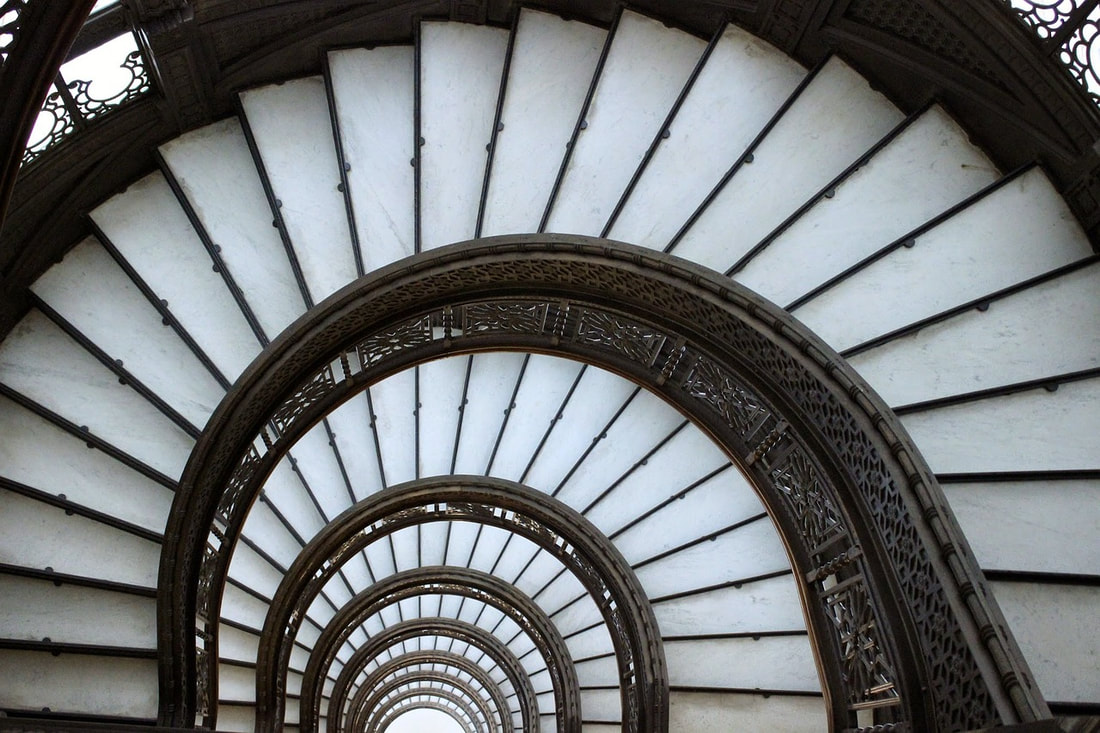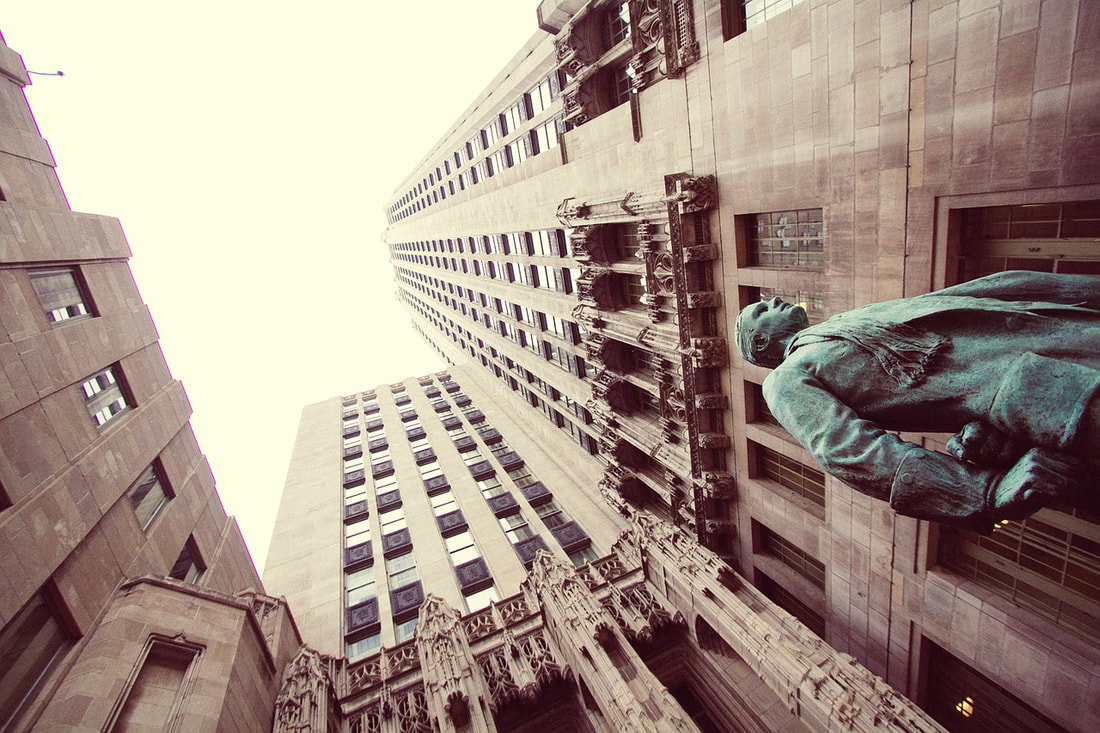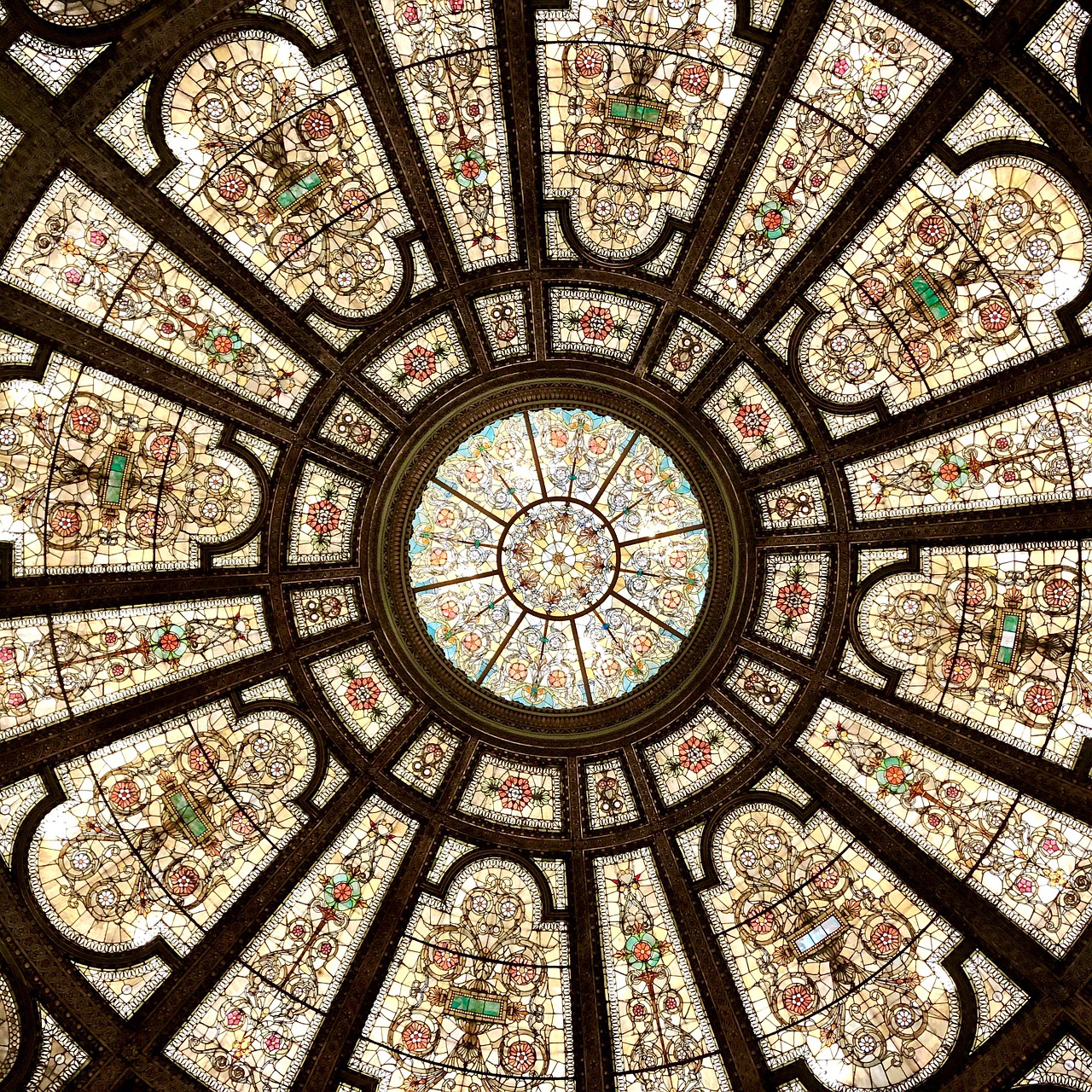Constructed in 1921, The Chicago Theatre was designed by C. W. (Cornelius Ward) Rapp and George L. Rapp in the “atmospheric style," using the company's signature Neo-Baroque French-Revival style. Similar to the Rookery Building, the theatre is stunning from the inside out. The brothers construction was such a success they went on to serve as architects for the entire Paramount/Publix chain.
175 N. State St.
An architectural wonder indeed from the inside and out, The Rookery Building is on the National Register of Historic Places and is a Chicago Landmark. Originally designed by famed architectural partners Burnham and Root, and completed in 1888, Frank Lloyd Wright redesigned the two-story skylight lobby in 1905 – 1907.
209 S. LaSalle St.
Completed in 1974, this mid century modern structure held its name, The Sears Tower for nearly 25 years after it's completion. This tower once held the title of being the tallest skyscraper in the world. Being 110 stories tall, the building is operated for commercial use, and paved the way for additional inspiration for skyscrapers across the globe.
The building changed names in 2009 to the Willis Tower; however, its origins rooted to the Sears Roebuck Company which in 1969 was the largest retailer in the world, employing approximately 350,000 staff in Chicago. The company hired SOM to design a three million-square-foot office tower and this is where the birth of the Sears Tower began.
233 S. Wacker Dr.
One of the most iconic buildings of the city’s skyline, this skyscraper has been seen in almost every photograph, post card and movie filmed in Chicago. A 40-second elevator ride takes you directly up to 360 CHICAGO, an observation deck located on the 94th floor. The deck soars 1,000 feet above ground and offers breathtaking views of Chicago’s lakefront, magnificent skyline and four neighboring states. Also located on the 94th floor is TILT – Chicago’s highest thrill ride.
875 N. Michigan Ave.
This Neo-gothic limestone tower is the headquarters for the Chicago Tribune Newspaper. The creation ignited from a 1922 competition that spurred a flood of international entries all wanting to create “the most beautiful and distinctive office building in the world” for the newspaper's headquarters.
435 N. Michigan Ave.
Chicago suffered a devastating fire in the 1800's, which ironically was the pathway to the creation of the skyscraper city. The water tower was one of the few buildings that survived the devastating fire that demolished most of the historic architecture. Completed in 1869, the gothic revival water tower now sits smooshed between high rises and has some interesting history to yet be explored.
MAURICE CHAMPAGNE, CAF DOCENT CLASS OF 2004 states, "We know that the Water Tower and Pumping Station survived the Chicago Fire of 1871. But most do not know that they survived because of a German immigrant fireman, Frank Trautman. He covered the buildings with woolen blankets and discarded canvas sails and kept the covers soaked in lake water."
806 N. Michigan Ave.
For those who love history and Architecture, The Chicago Cultural Center is one of the most prized and visited buildings in the city. Constructed over 100 years ago to serve as the city's library, the center is now to many free public art and music events. The center is home to two magnificent stained-glass domes, which is the draw for most of its visitors.
78 E Washington St,
Completed in 1893, the construction occurred in two phases, marking this as a transitional moment in architectural history. The exterior is not as impressive as other Chicago buildings, but the history is what makes it unique.
According to Chicago Architectural site, "The northern half, completed in 1891 and designed by Burnham & Root, has exterior walls that layer brick on top of brick, in the load-bearing tradition. When the second half of the building was designed by Holabird & Roche just two years later, experimentation and transition could be seen in its structural systems. The brick and terra cotta facade of the southern portion need not bear the weight of the building. Instead, it is hung on a rigid metal frame that transfers loads to the ground."
53 W Jackson Blvd
Images courtesy of pixabay
What's your favorite architectural wonder in Chicago?
Let's Connect!
This Lemon Tree article is now featured on GPSmyCity and available as a mobile app. To download this article for offline reading or travel directions to the attractions highlighted in this article, go to Walking Tours and Articles in Chicago on GPSmyCity. www.gpsmycity.com/gps-tour-guides/chicago-567.html










 RSS Feed
RSS Feed